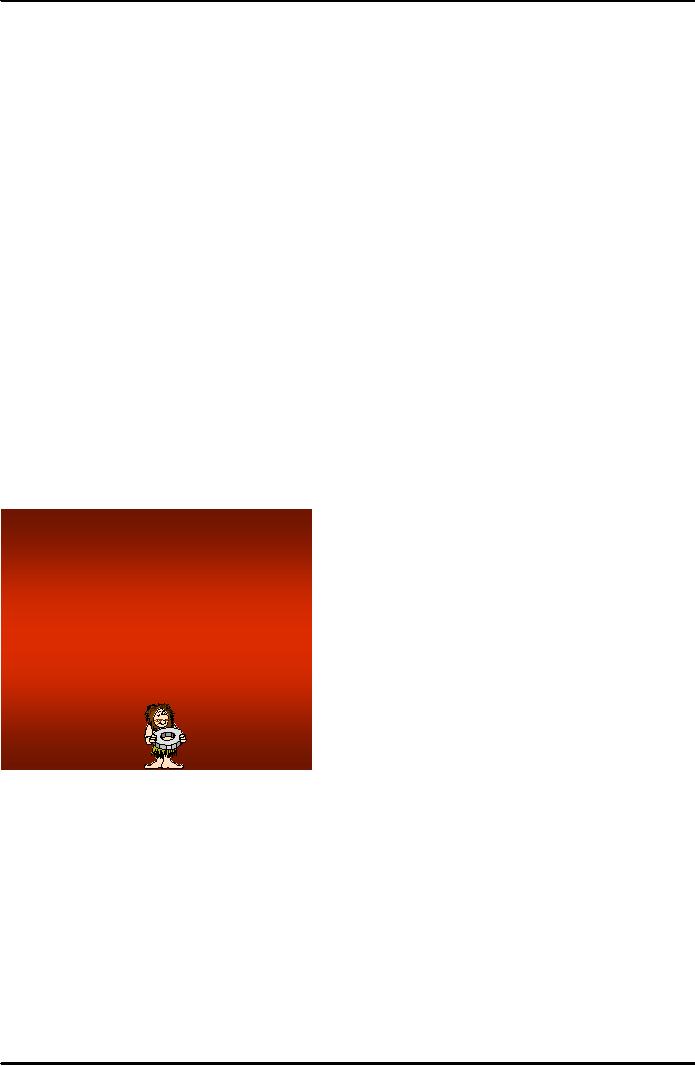 |

Principles
of Marketing MGT301
VU
Lesson
13
Lesson
overview and learning objectives:
In
last Lesson we discussed the
marketing research process first
two steps were discussed in
that
Lesson
today we will continue the
same topic and will be
discussing the remaining steps of
the
marketing
research process. Second
topic of today's Lesson is an
introduction to the consumer
behavior.
So
our today's topics are:
A.
THE MARKETING RESEARCH PROCESS
(Continued)
B.
CONSUMER MARKET
Contact
Methods:
Contact
methods are used to obtain
the information Contact methods
can be listed as:
1.
Mail
questionnaires--used
to collect large amounts of
information at a low
cost.
2.
Telephone
interviewing--good
method for collecting
information quickly.
3.
Personal
interviewing (which
can be either individual
or group interviewing).
A
form of personal interviewing is
"focus group
interviewing".
Focus-group
interviewing consists of inviting six to
ten people to gather for a
few hours with a
trained
interviewer to talk about a
product, service, or organization.
The interviewer
"focuses"
the
group discussion on important
issues.
4.
Online (Internet) marketing research
can consist of Internet
surveys or
online
focus groups.
Many
experts predict that online
research will soon be the
primary tool of marketing
researchers.
5.
Computer
interviewing is a
new method being used in
the technology age.
Consumers read
questions
from a computer screen and
respond.
Sampling
plans are used to outline
how samples will be
constructed and used.
1.
A
sample is a segment of the
population selected for marketing
research to represent
the
population
as a whole.
2.
Marketing
researchers usually draw conclusions
about large groups of consumers
by
studying
a small sample of the total consumer
population.
3.
Designing
a sample calls for three
decisions:
a.
Who
is to be
surveyed (what sampling
unit)?
b.
How
many people
should be surveyed (what
sample
size)?
c.
How
should
the sample be chosen
(what
sampling
procedure)?
4.
Kinds
of samples include:
a.
Probability
samples--each
population member has a known
chance of being
included
in the sample, and
researchers can calculate confidence
limits for sampling
error.
b.
Nonprobability
samples--sampling
error cannot be
measured.
Research
Instruments:
In
collecting primary data, marketing
researchers have a choice of
two main research
instruments--the
questionnaire
and mechanical devices. The
questionnaire is by far the
most
common
instrument, whether administered in
person, by phone, or online. Questionnaires
are very
flexible--there
are many ways to ask
questions. However, they
must be developed carefully
and
tested
before they can be used on a
large scale. A carelessly
prepared questionnaire usually
contains
several
errors.
57

Principles
of Marketing MGT301
VU
In
preparing a questionnaire, the marketing researcher
must first decide what
questions to ask.
Questionnaires
frequently leave out
questions that should be
answered and include
questions that
cannot
be answered, will not be
answered, or need not be
answered. Each question should be
checked
to see that it contributes to the
research objectives.
The
form of each question can
influence the response.
Marketing researchers distinguish
between
closed-end
questions and open-end questions.
Closed-end questions include
all the possible
answers,
and subjects make choices
among them. Examples include
multiple-choice questions
and
scale
questions. Open-end questions
allow respondents to answer in their
own words. Open-end
questions
often reveal more than
closed-end questions because respondents
are not limited in
their
answers.
Open-end questions are
especially useful in exploratory
research, when the
researcher is
trying
to find out what people
think but not measuring
how many people think in a
certain way.
Closed-end
questions, on the other
hand, provide answers that
are easier to interpret and
tabulate.
Researchers
should also use care in
the wording and ordering of
questions. They should
use
simple,
direct, unbiased wording. Questions
should be arranged in a logical order.
The first
question
should create interest if possible,
and difficult or personal
questions should be asked
last
so
that respondents do not become
defensive.
Although
questionnaires are the most
common research instrument,
mechanical instruments
also
are
used. We discussed two
mechanical instruments, people
meters and supermarket
scanners,
earlier
in the chapter. Another
group of mechanical devices
measures subjects' physical
responses.
Step
3 Implementing the Research
Plan
The
researcher next puts the
marketing research plan into action.
This involves
collecting,
processing,
and analyzing the information. Data
collection can be carried
out by the company's
marketing
research staff or by outside firms.
The company keeps more
control over the
collection
process
and data quality by using its
own staff. However, outside
firms that specialize in
data
collection
often can do the job
more quickly and at a lower
cost.
The
data collection phase of the
marketing research process is generally
the most expensive
and
the
most subject to error. The
researcher should watch
fieldwork closely to make sure
that the plan
is
implemented correctly and to
guard against problems with
contacting respondents, with
respondents
who refuse to cooperate or
who give biased or dishonest
answers, and with
interviewers
who make mistakes or take
shortcuts.
Step
4 Interpreting and Reporting the
Findings
The
final step in the marketing
research process is interpreting
and reporting the findings. The
researchers
should keep from
overwhelming managers with
numbers and fancy
statistical
techniques.
Researchers should present
important findings that are
useful in the major
decisions
faced
by management. Interpretation should
not be left only to
researchers. Marketing
managers
will
also have important insights
into the problems. Interpretation is an
important phase of
the
marketing
process. The best
research is meaningless if the
manager blindly accepts
wrong
interpretations
from the researcher.
The
researcher must now
interpret the findings, draw
conclusions, and report them
to
management.
The researcher should not
try to overwhelm managers
with numbers and
fancy
statistical
techniques. Rather, the researcher
should present important
findings that are useful
in
the
major decisions faced by
management.
However,
interpretation should not be
left only to the
researchers. They are often
experts in
research
design and statistics, but
the marketing manager knows
more about the problem
and the
58

Principles
of Marketing MGT301
VU
decisions
that must be made. In many
cases, findings can be
interpreted in different ways,
and
discussions
between researchers and
managers will help point to
the best interpretations.
The
manager
will also want to check
that the research project
was carried out properly
and that all
the
necessary
analysis was completed. Or,
after seeing the findings,
the manager may have
additional
questions
that can be answered through
further sifting of the data.
Finally, the manager is the
one
who
ultimately must decide what
action the research
suggests. The researchers
may even make
the
data
directly available to marketing managers
so that they can perform
new analyses and test
new
relationships
on their own.
Interpretation
is an important phase of the marketing
process. The best research
is meaningless if
the
manager blindly accepts
faulty interpretations from
the researcher. Similarly,
managers may be
biased--they
might tend to accept
research results that show
what they expected and to
reject
those
that they did not expect or
hope for. Thus, managers and
researchers must work
together
closely
when interpreting research results,
and both must share
responsibility for the
research
process
and resulting
decisions
A.
Consumer Market:
a.
Defining Consumer
Market:
All
individuals and households who
buy or acquire goods and
services for personal
consumption
are
termed as consumers. Markets have to be understood
before marketing strategies can be
developed.
People using consumer markets buy
goods and services for
personal consumption.
Consumers
vary tremendously in age, income,
education, tastes, and other factors.
Consumer
behavior
is
influenced by the buyer's characteristics
and by the buyer's decision
process. Buyer
characteristics
include
four major factors: cultural,
social, personal, and
psychological.
All
individuals and
households
who buy or
Consumer
Markets:
acquire
goods and
Consumer
Buying Behavior refers to
the buying
behavior
of final consumers--individuals
and
services
for personal
households
who buy goods and
services for
consumption
personal
consumption.
The
world consumer market consists of more
than 6
billion people.
At present growth rates,
the
world
population will reach almost 8
billion people by
2025
Consumers
around the world vary
tremendously in age, income, education
level, and tastes.
They
also
buy an incredible variety of goods
and services. How these
diverse consumers connect
with
each
other and with other
elements of the world around
them impacts their choices
among various
products,
services, and companies.
Here we examine the fascinating
array of factors that
affect
consumer
behavior.
b.
Why to Study Consumer
Behavior:
Basic
objective of the studying consumer
behavior is that the firm
needs to know who buys
their
product?
How they buy? When
and where they buy? Why
they buy? How they respond
to
marketing
stimuli. Because they study
consumer behavior (CB) what Consumer
Behavior is about?
59

Principles
of Marketing MGT301
VU
How,
why, where and when consumers
make purchase decisions?
Considers who influences
the
decisions?
What is Consumer Behavior about?
All these are important
questions, which are to
be
known
to the companies so that
they can design, and
implement marketing strategies to satisfy
the
customers.
Consumers determine the sales
and profits of a firm by
their purchase decisions,
thus
the
economic viability of the firm. In
late 1990, US consumers were
spending enough dollar bills
to
stretch
from the Earth to the
Sun and back, with
enough left over for
over 600 lines to the
moon!
Along
with these questions
companies should also be
knowing some other factors
like what is
Disposable
income and what is Discretionary income
what is the stage of family
life cycle stage
because
these all these factors
influence the consumer behaviors which
are very important to
the
marketers.
c.
Consumer Behavior
Consumer
behavior is the process
through which the ultimate
buyer makes purchase
decisions.
This
can be defined as the processes
involved when individuals or groups
select, purchase, use,
or
dispose
of products, services, ideas, or
experiences to satisfy needs
and desires (Solomon,
1996).
Those
actions directly involved in
obtaining, consuming and
disposing of products and
services,
including
the decision processes that
precede and follow those
actions (Engel et al.
1995).
Consumer
behavior examines mental and
emotional processes in addition to
the physical activities
as
by (Wilkie 1990).
d.
Marketing Applications:
Consumer
behaviors plays important role in almost
all types of decisions to be
made in marketing.
For
the reason being that
all functions performed in marketing
revolve around the customers
and
consumers.
Like:
Positioning:
Arranging
for a product to occupy a
clear, distinctive, and
desirable place relative to
competing
products in the minds of
target consumers.
Some
firms find it easy to choose
their positioning strategy. For
example, a firm well known
for
quality
in certain segments will go for
this position in a new
segment if there are enough
buyers
seeking
quality. But in many cases,
two or more firms will go
after the same position.
Then, each
will
have to find other ways to
set itself apart. Each firm
must differentiate its offer by
building a
unique
bundle of benefits that appeals to a
substantial group within the
segment.
The
positioning task consists of
three steps: identifying a
set of possible competitive
advantages
upon
which to build a position, choosing
the right competitive
advantages, and selecting an
overall
positioning
strategy. The company must
then effectively communicate
and deliver the
chosen
position
to the market.
Segmentation:
Dividing
a market into distinct groups of buyers on
the basis of needs,
characteristics,
or behavior who might require
separate products or marketing mixes.
Market
segmentation
reveals the firm's market
segment opportunities. The
firm now has to evaluate
the
various
segments and decide how
many and which ones to
target. We now look at how
companies
evaluate
and select target segments.
The company also needs to
examine major structural
factors
that
affect long-run segment
attractiveness. For example, a
segment is less attractive if it
already
contains
many strong and aggressive
competitors.
The
existence of many actual or
potential substitute
products
may
limit prices and the
profits that can be earned
in a segment. The relative power
of buyers
also
affects segment attractiveness. Buyers
with strong bargaining power
relative to sellers will
try
to
force prices down, demand
more services, and set
competitors against one another--all at
the
expense
of seller profitability. Finally, a
segment may be less
attractive if it contains powerful
suppliers
who
can control prices or reduce
the quality or quantity of
ordered goods and
services.
Product
development: A
strategy for company growth
by offering modified or new
products to
current
market segments. Developing
the product concept into a physical
product in order to
ensure
that the product idea
can be turned into a workable
product.
60

Principles
of Marketing MGT301
VU
Product
development--offering
modified or new products to
current markets.
Market
development: A
strategy for company growth
by identifying and developing new
market
segments
for current company
products.
International
marketing
61
Table of Contents:
- PRINCIPLES OF MARKETING:Introduction of Marketing, How is Marketing Done?
- ROAD MAP:UNDERSTANDING MARKETING AND MARKETING PROCESS
- MARKETING FUNCTIONS:CUSTOMER RELATIONSHIP MANAGEMENT
- MARKETING IN HISTORICAL PERSPECTIVE AND EVOLUTION OF MARKETING:End of the Mass Market
- MARKETING CHALLENGES IN THE 21st CENTURY:Connections with Customers
- STRATEGIC PLANNING AND MARKETING PROCESS:Setting Company Objectives and Goals
- PORTFOLIO ANALYSIS:MARKETING PROCESS,Marketing Strategy Planning Process
- MARKETING PROCESS:Analyzing marketing opportunities, Contents of Marketing Plan
- MARKETING ENVIRONMENT:The Company’s Microenvironment, Customers
- MARKETING MACRO ENVIRONMENT:Demographic Environment, Cultural Environment
- ANALYZING MARKETING OPPORTUNITIES AND DEVELOPING STRATEGIES:MIS, Marketing Research
- THE MARKETING RESEARCH PROCESS:Developing the Research Plan, Research Approaches
- THE MARKETING RESEARCH PROCESS (Continued):CONSUMER MARKET
- CONSUMER BUYING BEHAVIOR:Model of consumer behavior, Cultural Factors
- CONSUMER BUYING BEHAVIOR (CONTINUED):Personal Factors, Psychological Factors
- BUSINESS MARKETS AND BUYING BEHAVIOR:Market structure and demand
- MARKET SEGMENTATION:Steps in Target Marketing, Mass Marketing
- MARKET SEGMENTATION (CONTINUED):Market Targeting, How Many Differences to Promote
- Product:Marketing Mix, Levels of Product and Services, Consumer Products
- PRODUCT:Individual product decisions, Product Attributes, Branding
- PRODUCT:NEW PRODUCT DEVELOPMENT PROCESS, Idea generation, Test Marketing
- NEW PRODUCT DEVELOPMENT:PRODUCT LIFE- CYCLE STAGES AND STRATEGIES
- KEY TERMS:New-product development, Idea generation, Product development
- Price the 2nd P of Marketing Mix:Marketing Objectives, Costs, The Market and Demand
- PRICE THE 2ND P OF MARKETING MIX:General Pricing Approaches, Fixed Cost
- PRICE THE 2ND P OF MARKETING MIX:Discount and Allowance Pricing, Segmented Pricing
- PRICE THE 2ND P OF MARKETING MIX:Price Changes, Initiating Price Increases
- PLACE- THE 3RD P OF MARKETING MIX:Marketing Channel, Channel Behavior
- LOGISTIC MANAGEMENT:Push Versus Pull Strategy, Goals of the Logistics System
- RETAILING AND WHOLESALING:Customer Service, Product Line, Discount Stores
- KEY TERMS:Distribution channel, Franchise organization, Distribution center
- PROMOTION THE 4TH P OF MARKETING MIX:Integrated Marketing Communications
- ADVERTISING:The Five M’s of Advertising, Advertising decisions
- ADVERTISING:SALES PROMOTION, Evaluating Advertising, Sales Promotion
- PERSONAL SELLING:The Role of the Sales Force, Builds Relationships
- SALES FORCE MANAGEMENT:Managing the Sales Force, Compensating Salespeople
- SALES FORCE MANAGEMENT:DIRECT MARKETING, Forms of Direct Marketing
- DIRECT MARKETING:PUBLIC RELATIONS, Major Public Relations Decisions
- KEY TERMS:Public relations, Advertising, Catalog Marketing
- CREATING COMPETITIVE ADVANTAGE:Competitor Analysis, Competitive Strategies
- GLOBAL MARKETING:International Trade System, Economic Environment
- E-MARKETING:Internet Marketing, Electronic Commerce, Basic-Forms
- MARKETING AND SOCIETY:Social Criticisms of Marketing, Marketing Ethics
- MARKETING:BCG MATRIX, CONSUMER BEHAVIOR, PRODUCT AND SERVICES
- A NEW PRODUCT DEVELOPMENT:PRICING STRATEGIES, GLOBAL MARKET PLACE